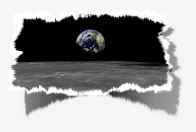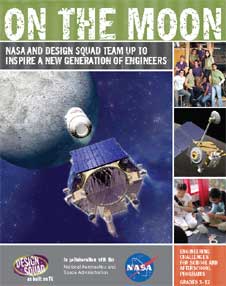Have you filled out the online surveys for all of the NASA Explorer Schools activities you have completed? It is important to fill out the surveys for each one, as filling out the surveys is the only way to receive credit for that activity. The surveys ask no more than ten questions and should take less than five minutes to complete.
 Completing the surveys counts towards your eligibility for the NES Recognition Program. To become eligible to apply for NES Recognition and have the opportunity to participate in a unique NASA event, you must complete one of each of the core NES activities:
Completing the surveys counts towards your eligibility for the NES Recognition Program. To become eligible to apply for NES Recognition and have the opportunity to participate in a unique NASA event, you must complete one of each of the core NES activities:• Use of Teaching Materials.• Participate in Electronic Professional Development (Live or On-Demand).• View a NASA Now Event.
If you fill out the surveys, we will know that you have used the NES Resources and you become eligible for NASA recognition.
Additionally, the surveys offer you the opportunity to give us feedback on NES resources. We place great value on the comments we receive from teachers and will use this information to make improvements to the NES selection of resources.
Are you unsure of where to find the surveys? Each Virtual Campus page for the Teaching Materials, Electronic Professional Development videos, and NASA Now events has a unique survey button located on the bottom right-hand of the page, indicated by an easy-to-spot yellow clipboard symbol.
Log onto the NES Virtual Campus today and fill out surveys for any activities you already have completed. Also remember to do so for all activities now and in the future. We are looking forward to receiving your feedback!

 In this installment of
In this installment of 
 The lesson from the NASA Explorer Schools module Lunar Nautics: Lunar Base Supply Egg Drop makes a great family night activity. Students and their parents design and construct a package for the raw egg payload. The package should allow the raw egg payload to be recovered unharmed (both the shell and yolk should be intact) when dropped from a second story (height of at least 9.144 meters).
The lesson from the NASA Explorer Schools module Lunar Nautics: Lunar Base Supply Egg Drop makes a great family night activity. Students and their parents design and construct a package for the raw egg payload. The package should allow the raw egg payload to be recovered unharmed (both the shell and yolk should be intact) when dropped from a second story (height of at least 9.144 meters). Remember the Y2K scare? It came and went without much of a whimper because of adequate planning and analysis of the situation. Impressive movie special effects aside, Dec. 21, 2012, won’t be the end of the world as we know. It will, however, be another winter solstice.
Remember the Y2K scare? It came and went without much of a whimper because of adequate planning and analysis of the situation. Impressive movie special effects aside, Dec. 21, 2012, won’t be the end of the world as we know. It will, however, be another winter solstice.  One of the challenges in education is to modify an activity to address objectives in multiple subject areas, challenging students to use skills from different subject areas to solve a problem. NASA Explorer Schools educator Chris Deleon at Hudson Middle School added a twist to the On Target content module that reached beyond the fundamental standards the activity covers.
One of the challenges in education is to modify an activity to address objectives in multiple subject areas, challenging students to use skills from different subject areas to solve a problem. NASA Explorer Schools educator Chris Deleon at Hudson Middle School added a twist to the On Target content module that reached beyond the fundamental standards the activity covers. As the Space Shuttle Program nears retirement, NASA is looking for ways to preserve the program’s history and inspire the next generation of space explorers, scientists and engineers. NASA is offering 7,000 shuttle heat shield tiles to schools and universities that want to share technology and a piece of space history with their students.
As the Space Shuttle Program nears retirement, NASA is looking for ways to preserve the program’s history and inspire the next generation of space explorers, scientists and engineers. NASA is offering 7,000 shuttle heat shield tiles to schools and universities that want to share technology and a piece of space history with their students. Educators are invited to register for 2-3 days of free workshop training and earn 12 to 18 hours toward continuing education units.
Educators are invited to register for 2-3 days of free workshop training and earn 12 to 18 hours toward continuing education units.